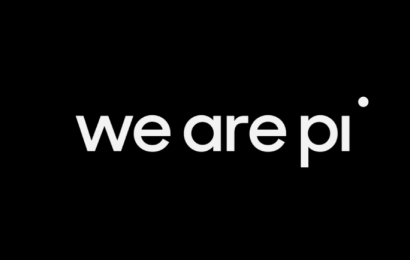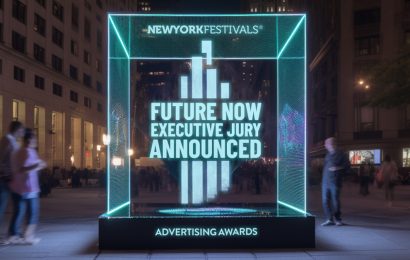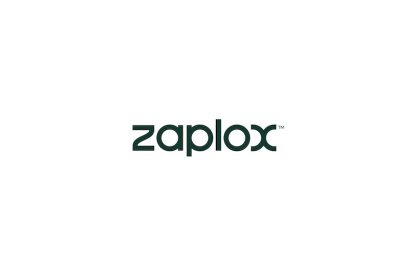Is this the death of the press conference or just its evolution?
The communication world is in a continuous change in the last years, as the digital and the new technologies are taking over and introducing us to a new way of thinking and seeing things. Everything is faster, better, evolving and transforming.
Therefore, in those times of evolution and change, with a faster and faster pace, it’s harder and harder to see things as before, to act as before. Harder, and, many of the times, unnecessary. As the communication industry sees PR blending with advertising and other types of creating content, it is only natural for the press conferences to change and for the people attending them to have a different perspective when it comes to them. AdHugger.net wanted to know how is this change happening and how are the clients and the agencies positioning themselves towards “the new reality” and “the new era”.
Can one say that the time of the press conference is over? Or is it becoming a new format? “I’ve been in the PR business in a time when an agency would handle tens of press conferences a year for their clients. The first thing I want to point out is that I’m not as old as it would seem – it happened just a few years ago. What has changed so rapidly? First, the diversity of communication tools, which makes information so accessible to the audience – be it the media or the general audience: live streaming a message on social media is so at hand that it often becomes the preferred alternative. Second – and in tight connection with the evolution of PR tactics – communication objectives have diversified also. More and more, companies and brands aim to offer the audience an experience that facilitates the message. It goes beyond informing: it creates a connection,” said Lavinia Chican, senior partner McCann PR. However, as she pointed out, press conferences create a unique frame for a transparent dialogue with the media. “I don’t believe their era is gone or will be gone soon. The classic press conferences have just restrained a bit to those situations when informing and building trust is something you don’t want to deviate from. This territory includes crisis situations, but is not limited to them,” added Chican.

On her turn, Camelia Eremia, client service director MSL The Practice, considers that there are two sides to look at this topic. One regards Corporate Communication and the other one regards Brand Communication. “Regarding Corporate Communication, face-to-face communication will always remain important. It’s more human and more credible for companies to communicate face-to-face. Also journalists want to speak to real people, to look at actual persons, to have dynamic conversations, not only to receive press releases, exchange emails or use other digital channels when they need to collect official information from companies,” said Eremia. However, in the past few years the number of press conferences/ press events did reduce drastically. “The first reason is the need for speed – journalists need to receive official information fast, instantly or in a matter of hours, while preparing a press conference can take days/ weeks. A second reason is budget prioritization – organizing press conferences requires logistical and financial efforts and sometimes it is wise for companies to use those budgets smarter. A third very real and painful reason (speaking particularly about Bucharest) is the traffic jam nightmare – the increasingly crowded road traffic makes it virtually impossible to move around the city during the day,” explained MSL The Practice’s client service director. Therefore, as she is pointing out, the press conferences are still efficient if the particular context and the strong newsworthy topic justify it. If the topic is powerfully newsworthy or it offers the unique chance to an experience journalists wouldn’t otherwise have access to, the press conference is still an effective communication tool.

“When it comes to Brand Communication, press conferences have thrived and have transformed in the past 10 years into experiential events, where journalists and other stakeholders can better understand the brand personality and get introduced to a new product or service through creative experiences and activations during the event. The Brand events are more out of the box, are usually entertaining and this is why the main focus is on the experience you can provide to the guests, not on having powerful brand news that can make the next day front page,” added Eremia. Raluca Ene, managing director Chapter 4 Communications Romania, considers that it actually depends on the situation, as there are still products for which a live meeting with the media representatives has a strong justification, such as a new gadget or other electronic equipment, or a product that is challenging to showcase to the journalists in any other way. Crisis communication could also include press conferences in some cases. “But for the majority of other subjects this kind of an event became obsolete. Time runs much faster today, the city is much busier, media resources are so much limited, while in the same time the diversity of virtual communication channels is so generous that it’s nearly impossible not to find something that fits. Information can be disseminated in a vast number of ways, all we need is a bit of creativity and a bit more of data analysis,” said Ene. A different point of view has Veronica Placintescu, head of corporate communications at Oxygen. She considers that time and industry changes over the past decade have made the classical format of press conferences to become slightly obsolete, regrettably proving sometimes to be more effective to just send out a press release.
The golden age of press conferences, when journalists would take up to 3 hours of their day to create only one piece of content, is rapidly fading away. The status of the speakers at such an event, or the importance of the news presented, have become less relevant for them. It no longer weighs as much as 10 years ago that the CEO of a large company, for example, is presenting the strategy for the ongoing year. Currently, in the same 3-hour timeframe, the media is required to produce considerably more content and get it out there as fast as possible. As long as they receive the same information in a press release, they no longer find it time effective to attend a press conference, and, in this context, it becomes less efficient for a company to organize one,” commented Placintescu.
And her opinion is supported by Alina Galeriu, managing partner at Galeriu & Partners Public Relations. With extended experience in journalism prior to entering the PR world, Galeriu believes that the time of “old ways” in PR is over, because the context has changed and the agencies’ approach should also change accordingly. What stays the same is the essence of why we do things and what is ethical or not in our branch, but the how, that is what gets transformed daily. “Press conferences in the way we understood the term 10 years ago have become useless. In a time where the information exchange is instantaneous thanks to digital means, the idea that a group of people would travel across town to “get an information” about our client is hilarious. This information exchanged can be done much more effectively via email. So, if we can reach our goal of sending the news via email, why would we bother investing money, time and energy in organizing a press conference? We don’t. But this does not mean press gatherings are dead also. Because, there is still an appetite for socializing, exchanging ideas and getting the chance to experience first hand the newest products and so on,” said Galeriu.
What will they change into
With the change here, into what are the press conferences changing into and what is working for the brands now? We had a glimpse in the previous answers, but our specialists are here to explain it even further. “As the PR agency of many innovative companies and brands, we’re constantly approaching the newest tools out there and also upgrading classic PR tactics with a great amount of creativity. With such an abundance of messages everyone is getting, it takes all of the above to stand out. And standing out means that how you communicate should be memorable, accessible, audience-friendly. With Coca-Cola Romania and the Dorna brand, we have been innovating the press conference sector for 4 or 5 years now, all with the goal to maximize the reach and awareness results of the Dorna CSR campaign Care for Children, which helps the cause of the premature born babies. We created a tennis field on top of the the event location for Simona Halep and Andi Moisescu to play tennis on in February of 2015, all of it broadcast live in the conference room, with journalists and other participants thrilled when the two stepped out of the screen and into the actual press conference location,” said Lavinia Chican.
Moreover, McCann PR organized a press conference at the National Theatre in Bucharest in 2016, with the great actor Horatiu Malaele performing and decomposing the agency’s campaign on stage, it started campaigns live from press conferences on Simona Haleps’s social media accounts in 2017 and it had Halep personally interview and recruit journalists during last year’s press launch. “This year, we invited the media to a symphonic concert that started with an uncomfortable silence, as a metaphor for the difficulties that preterm babies face when they come to life, unable to make a sound, on account of their lungs being yet under developed. We actually launched this year’s campaign with an 80-musician orchestra on stage. All this is proof enough for us that the press conference, as other classic PR tools, is not even closet or being dead – it merely transforms and adapts to the realities we live today. As long as we know this, we – as an industry – are safe,” added Chican.

When it comes to pure media relations, Camelia Eremia considered that sometimes there are other more effective ways than the classical press conference that can benefit both journalists and companies. These can vary from informal events such media brunches or lunches, press trips, one-to-one meetings, phone calls or online live interviews when distance is an issue. Lifestyle events can be other ways of connecting and engaging with press and influencers and creating direct experiences with the products or services. Opinion supported by Alina Galeriu and by Veronica Placintescu.
Press conferences are out, but brunches or cocktails for a product launch, press workshops and debates and even private meetings are still very much alive. Human interaction still is an important factor when it comes to media relations, but it simply cannot be put in the same equation with the idea that by human interaction you get information fast. You don’t. But there are other goals you can accomplish with human interaction, often even more important than the information exchange, and one of them is the goal of creating an emotional link between the brand we represent and press representatives. The way we make press representatives, bloggers and influencers feel when we meet them at various gatherings is still a skill that PR people need to keep and cherish. And it is maybe one of the few skills in our field truly evergreen,” said Alina Galeriu.
But, a more digital approach in the external communication strategy should not be confused with the offline media relations becoming an isolated pariah of sorts, told us Oxygen’s representative. “What is important to keep in mind is that offline media relations currently function on a cost per value basis and, in the end, clients must be aware that we are bargaining for the media’s time. Why should our event be more important for a journalist than their time? What are we offering in exchange to be worth it – not for us, but for them? These are the main questions we start from, together with specific media mapping and reasoning, and then build a strategy around that. We start from the news or information that we want to communicate and make sure we add specific satellite communication angles that will help achieve our objectives,” commented Veronica Placintescu. And that, while the dynamic should be recalibrated altogether. And Oxygen’s head of corporate communications found two solutions: owned media – companies should invest in creating more original newsworthy content (both written and multimedia), hosted on dedicated and owned platforms or on their social media pages (and this way, they become broadcasters of their own, where the media can turn to for news, market trends, and actual quotes) and organizing online press conferences or web seminars, and broadcast them via a secured platform, where you invite a selected group of media attendees to watch a live, streaming, online video presentation of the financial results, for example, or other such topics.

On her turn, as pointed out before, Raluca Ene considers that the evolution depends on the industry, on the product, on the news. “In relation with the media, journalists started to develop alternative channels of their own, such as blogs, video blogs, even podcasts that are either adding on their traditional media activity (such as article writing/reporting) or kept separate, as their own platform of expression. As an answer to this trend, we started personalizing our interactions with them accordingly and delivering them information in audio and/or video format as well. One-to-ones are as strong as ever, as there is nothing more efficient and more authentic than an open discussion on the common topic of interest. Events are still on the agenda, but they became much better targeted and carefully content curated to make sure they are bringing enough added-value to compensate for the time people are investing in joining them,” explained the Chapter 4 Communications Romania representative.

At the end of the day, both our clients and the journalists have the same public they want to communicate with, and finding a mutually advantageous way of doing it should be a priority for their activity.
On the journalist boat
When it comes to journalists’ side of things, that is not different from the agencies’ ones, Loredana Sandulescu, editorial director Biz magazine, believes that it is over for the press conferences as they used to be 10 or 15 years ago and it is definitely over for conferences just for the sake of a conference, which unfortunately can turn into a waste of time on both sides: company and journalists. “The news has to be fresh, important and relevant to the publications invited to attend the press conference. In addition, the company`s representatives have to be truly open to share insightful and valuable information and be ready go beyond what has already been written in the press release. If it is not the case or if the news is not too big, it is perhaps better to share it via email,” explained Sandulescu. Her point of view is supported by Andra Imbrea, editor wall-street.ro, who believes that it is time for the press conferences to reinvent themselves in order to remain relevant. „I believe that agencies should give up the classic model and propose a more attractive and interactive format, one that would offer something extra, either in terms of one-to-one discussions after the presentation or networking, etc. I am not for the press conference where it’s about the quantity and the agencies should be selective when choosing the people they invite,” added Imbrea.

Moreover, as Sandulescu points out, when scheduling a press conference and choosing the location, regardless of how nice and cool a new place in town might be, it is perhaps better to consider the locations situated in or nearby the city center, or at least a location with a decent public transportation connection, subway preferably.
Least but not last, since we are now living the golden era of technology and the capabilities hi-tech connectivity increase, I often wonder why don`t we have in Romania more video press conferences via phone, Skype or any other online communication tool. It would save us so much time and financial resources and the interactivity could be pretty much the same. I am not pleading for online communication only, I always find direct human to human interaction more rewarding, however when it comes to work I think it is better to be rather efficient than emotional,” makes Sandulescu a very relevant point of view.
Therefore, what are you our specialists’ reasons for choosing to go or not a press conference? Andra Imbrea puts on the first place the importance of the subject and the relevance for the publication she is representing, the speakers, but especially the possibility to have a one-on-one interview after the event.
I hardly go to events without talking more with the speakers. I could just post the press release from the press room. I also consider very important the hour and the location of the conference. I am not a morning person, therefore I am not very keen into morning conferences and I would prefer a central area, we all know about the Bucharest traffic,” concluded the wall-street.ro representative.

On her turn, the Biz editorial editor, considering that time is shorter, therefore she needs to be more selective when choosing where to go, she attends a conference when the news to be announced or the topics to be discussed are relevant for the features she is documenting or writing at that moment or if it helps her better understand some specific topics / insights. “I also go to conferences when I want to meet in person some of the company`s representatives in order to catch a glimpse of their style / personality / work etc.,” added Sandulescu.
Advice for organizing a press conference
Loredana Sandulescu, editorial director Biz:
- Please stop handing over printed press releases. Just send it over via email, there is no need to cut more trees than we already cut.
- Please start on time. I know journalists are sometimes late and they come up with all sorts of excuses, traffic jams, weather and so on and I am aware that it takes time to change old habits, but I am sure we can all make a joint effort to start pushing things into the right direction.
Andra Imbrea, editor wall-street.ro:
- Think what you have to communicate about and do it in an unique manner, don’t settle for the classic event.
- Take in account the audience’s profile and offer pieces of information and relevant subjects for each one of them.
Camelia Eremia, client service director MSL The Practice:
Apart from the analysis of the relevance and opportunity of a press conference in relation with the topic to be communicated, the basic “input versus output” model is the basis of the recommendations we make for our clients. Pondering time and money spent versus expected results should be an indicator of the return on investment.
Lavinia Chican, senior partner McCann PR:
We always analyze the nature of the subject to be communicated, the context, the purpose in order to recommend the right tactics. There is no universal recipe. To this, we add our touch, based on our experience and our ambition to do things differently & to be the first to implement crazy ideas, do the impossible possible. We want each event to bring a fresh approach and stand out. It’s the reason most of our clients like to work with us, so breaking the path is what we need to do in order to rise to the expectations.
Raluca Ene, managing director Chapter4 Communications Romania:
It all starts from the business objectives, and follows the path of the communication ones. If the information is new enough, strong enough, relevant enough to justify a press conference, then that’s what we are going to recommend for reaching our targets, as results are the essence of our activity. But if there are any variables that would not meet a strong argumentation in favor of this kind of an event, then the sky is really the limit in terms of creativity when it comes to finding any other tool that would better accommodate the subject.
Alina Galeriu, managing partner Galeriu & Partner Public Relations:
Advising clients for certain PR tactics is always the second step after offering strategic counseling in terms of what we want to achieve for gaining brand awareness, likeability or other specific metrics. A press conference might not be an effective tool most of the times nowadays, but it can be replaced with other types of events to meet client’s objectives and needs. A situation when a press conference is required is a crisis, when the need for an open statement from the company representatives and a set of Q&As would lighten up a critical situation. Otherwise, I would advise replacing the press conference format with a less formal type of gathering, focused more on offering attendees a unique experience that it would make the brand stand out from the crowd.
Veronica Placintescu, head of corporate communications Oxygen:
A press event is always recommendable when announcing a new comer on the market, such as a company launch or a newly appointed executive, when presenting a new product together with the development team, or launching state of the art technology. You do it, nonetheless, in a different format – more dynamic, more informal, with less powerpoint presentations and more visual materials and newsworthy data, encouraging dialogue rather that holding a speech and then answering to questions.
Also, press trips continue to do the trick, whether you organize a media round table in another city or another country.






